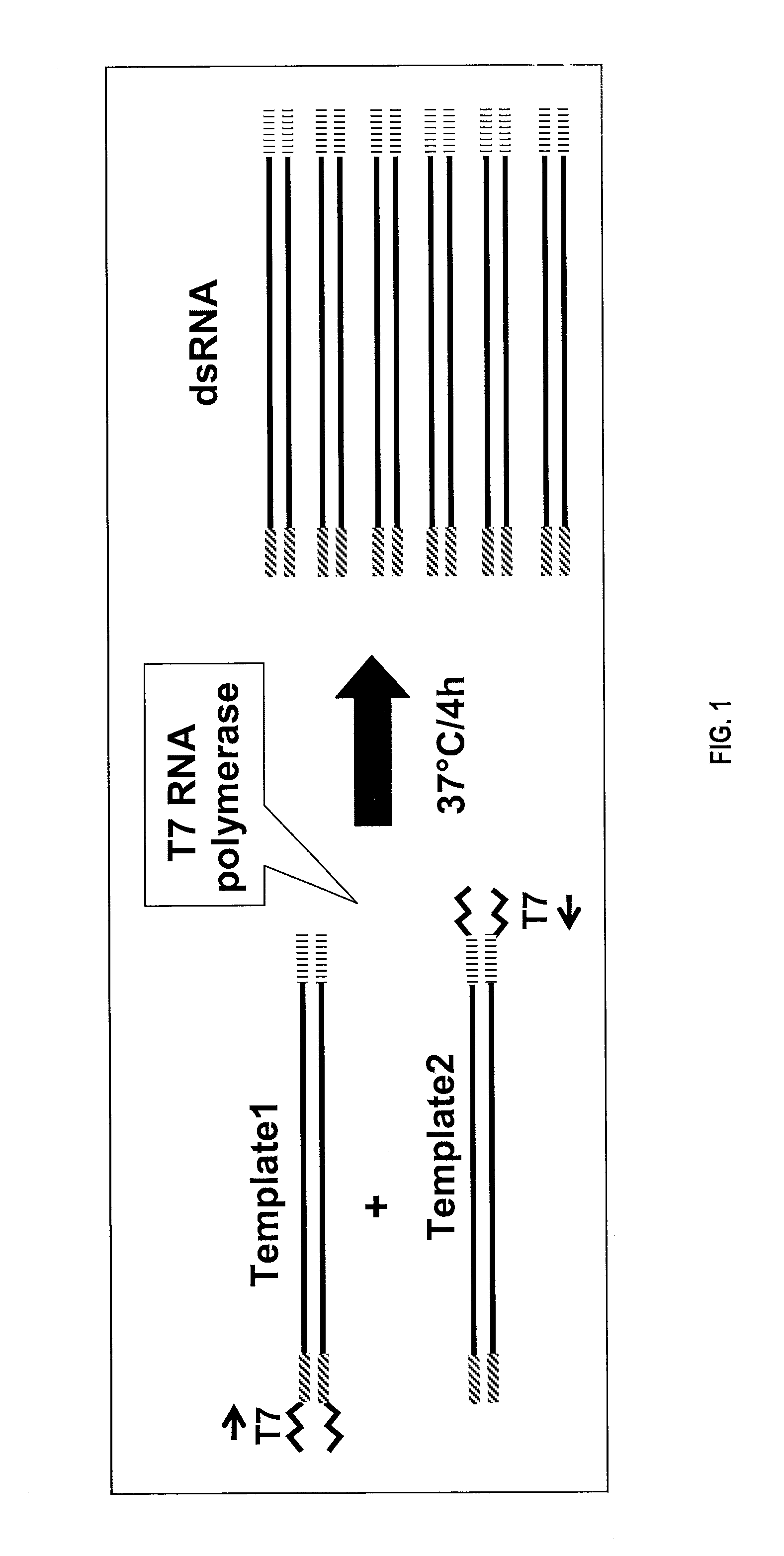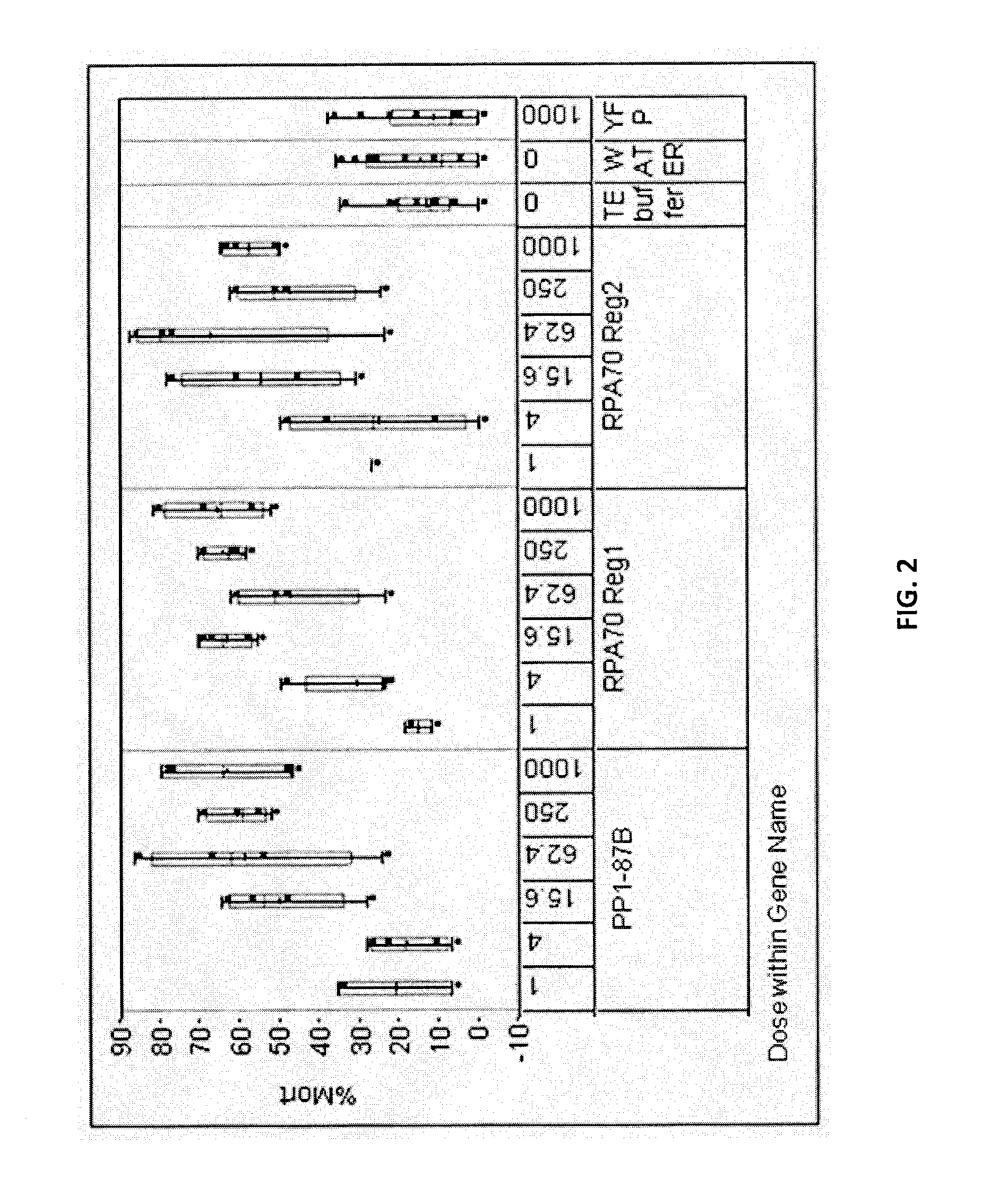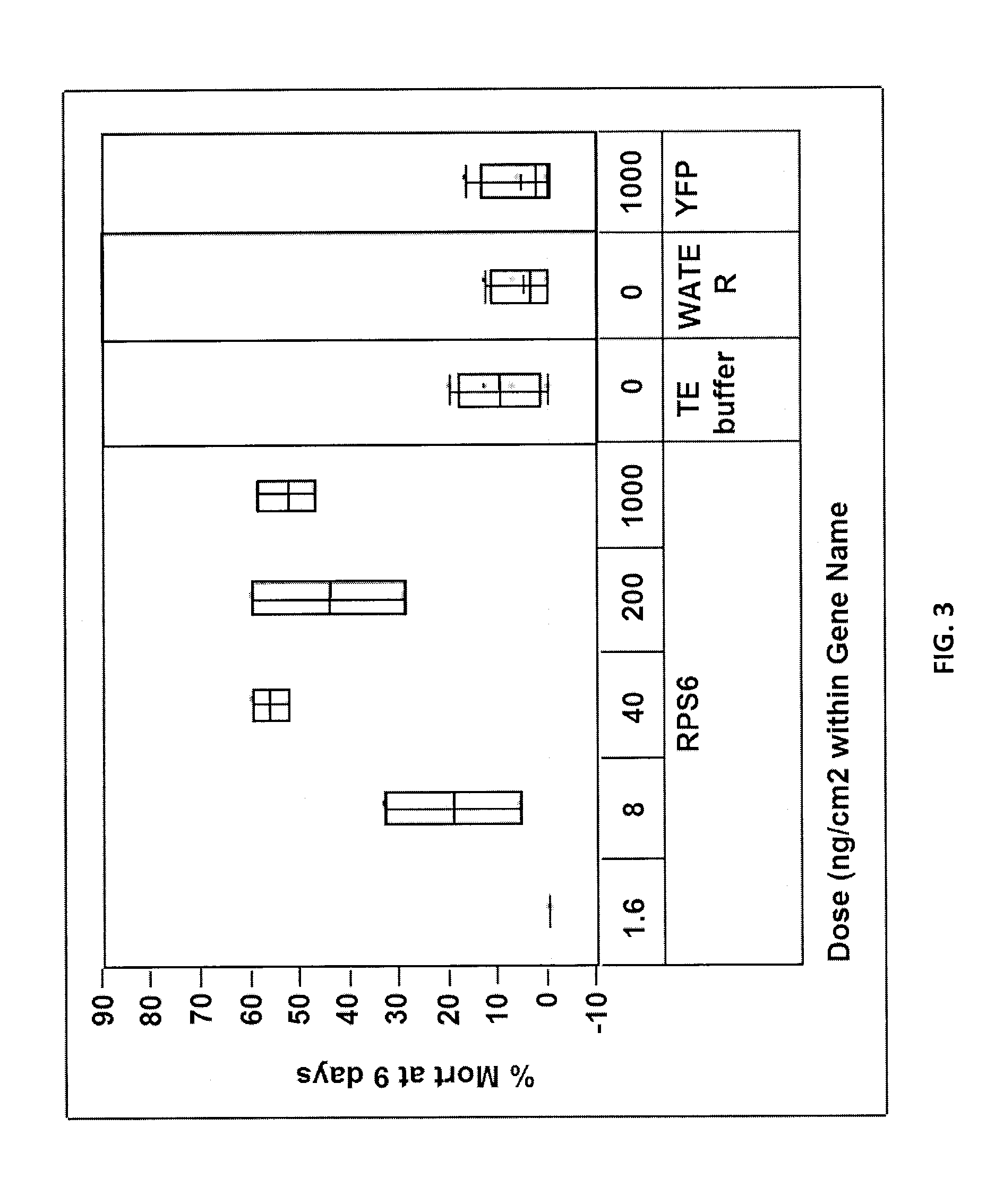Nucleic acid molecules that target rps6 and confer resistance to coleopteran pests
a technology of rps6 and nucleic acid, applied in the field of nucleic acid molecules, can solve problems such as reducing growth and/or reproduction, and achieve the effect of achieving resistance to coleopteran pests
- Summary
- Abstract
- Description
- Claims
- Application Information
AI Technical Summary
Benefits of technology
Problems solved by technology
Method used
Image
Examples
example 1
Materials and Methods
Sample Preparation and Bioassays.
[0243]A number of dsRNA molecules (including those corresponding to PP1-87B, RPA70 Reg1, RPA70 Reg2, RPA70 Reg3, and RPS6) were synthesized and purified using a MEGAscript® RNAi kit. The purified dsRNA molecules were prepared in TE buffer, and all bioassays contained a control treatment consisting of this buffer, which served as a background check for mortality or growth inhibition of WCR. The concentrations of dsRNA molecules in the bioassay buffer were measured using a NanoDrop™ 8000 spectrophotometer (Thermo Scientific, Wilmington, Del.).
[0244]Samples were tested for insect activity in bioassays conducted with neonate insect larvae on artificial insect diet. WCR eggs were obtained from Crop Characteristics, Inc. (Farmington, Minn.).
[0245]The bioassays were conducted in 128-well plastic trays specifically designed for insect bioassays (C-D International, Pitman, N.J.). Each well contained approximately 1.0 mL of a diet designed...
example 2
Identification of Candidate Target Genes
[0253]Multiple stages of WCR (Diabrotica virgifera virgifera LeConte) development were selected for pooled transcriptome analysis to provide candidate target gene sequences for control by RNAi transgenic plant insect resistance technology.
[0254]Total RNA was isolated from about 0.9 g whole first-instar WCR larvae (Diabrotica virgifera virgifera LeConte; 4 to 5 days post-hatch, held at 16° C.) and purified using the following phenol / TRI REAGENT®-based method (Molecular Research Center, Cincinnati, Ohio; Cat. No. TR 118):
[0255]Larvae were homogenized at room temperature in a 15 mL homogenizer with 10 mL of TRI REAGENT® until a homogenous suspension was obtained. Following 5 min. incubation at room temperature, the homogenate was dispensed into 1.5 mL microfuge tubes (1 mL per tube), 200 μL of chloroform was added, and the mixture was vigorously shaken for 15 seconds. After allowing the extraction to sit at room temperature for 10 min, the phases...
example 3
Amplification of Target Genes
[0271]Primers were designed to amplify portions of coding regions of each target gene by PCR. See Table 1. Where appropriate, a T7 phage promoter sequence (TTAATACGACTCACTATAGGGAGA (SEQ ID NO:8)) was incorporated into the 5′ ends of the amplified sense or antisense strands. See Table 1. Total RNA was extracted from WCR, and first-strand cDNA was used as template for PCR reactions using opposing primers positioned to amplify all or part of the native target gene sequence.
TABLE 1Primers and Primer Pairs used to amplify portions of codingregions of exemplary target genes.GenePrimer(Region)NameSEQ ID NO:SequencePair 1PP1-87BPP1-87B-F_T7SEQ ID NO: 9TTAATACGACTCACTATAGGGAGACAAATGGCAGAAGCAGATAAATTGPP1-87BPP1-87B-RSEQ ID NO: 10CTAATTTGTTCCATTGATTGTAGGTCCPair 2PP1-87BPP1-87B-FSEQ ID NO: 11CAAATGGCAGAAGCAGATAAATTGPP1-87BPP1-87B-R_T7SEQ ID NO: 12TTAATACGACTCACTATAGGGAGACTAATTTGTTCCATTGATTGTAGGTCCPair 3RPA70RPA70-F1_T7SEQ ID NO: 13TTAATACGACTCACTATAGGGAGAATG(region ...
PUM
| Property | Measurement | Unit |
|---|---|---|
| length | aaaaa | aaaaa |
| length | aaaaa | aaaaa |
| length | aaaaa | aaaaa |
Abstract
Description
Claims
Application Information
 Login to View More
Login to View More - R&D
- Intellectual Property
- Life Sciences
- Materials
- Tech Scout
- Unparalleled Data Quality
- Higher Quality Content
- 60% Fewer Hallucinations
Browse by: Latest US Patents, China's latest patents, Technical Efficacy Thesaurus, Application Domain, Technology Topic, Popular Technical Reports.
© 2025 PatSnap. All rights reserved.Legal|Privacy policy|Modern Slavery Act Transparency Statement|Sitemap|About US| Contact US: help@patsnap.com



